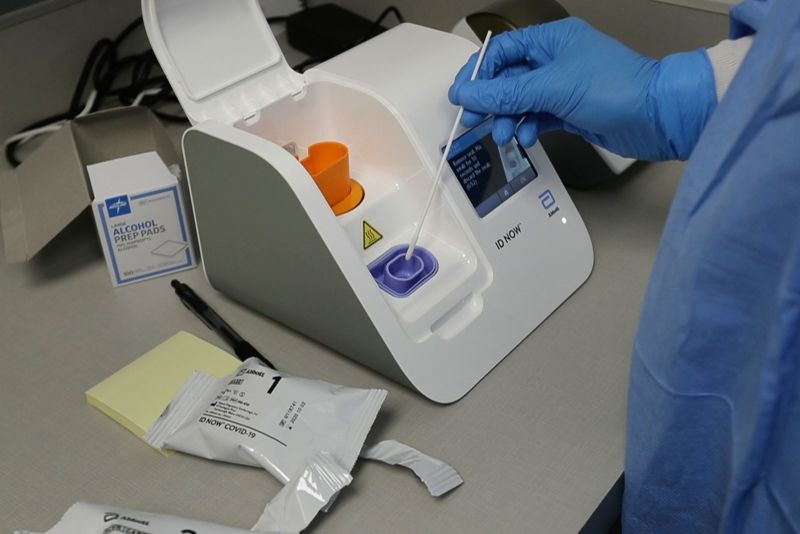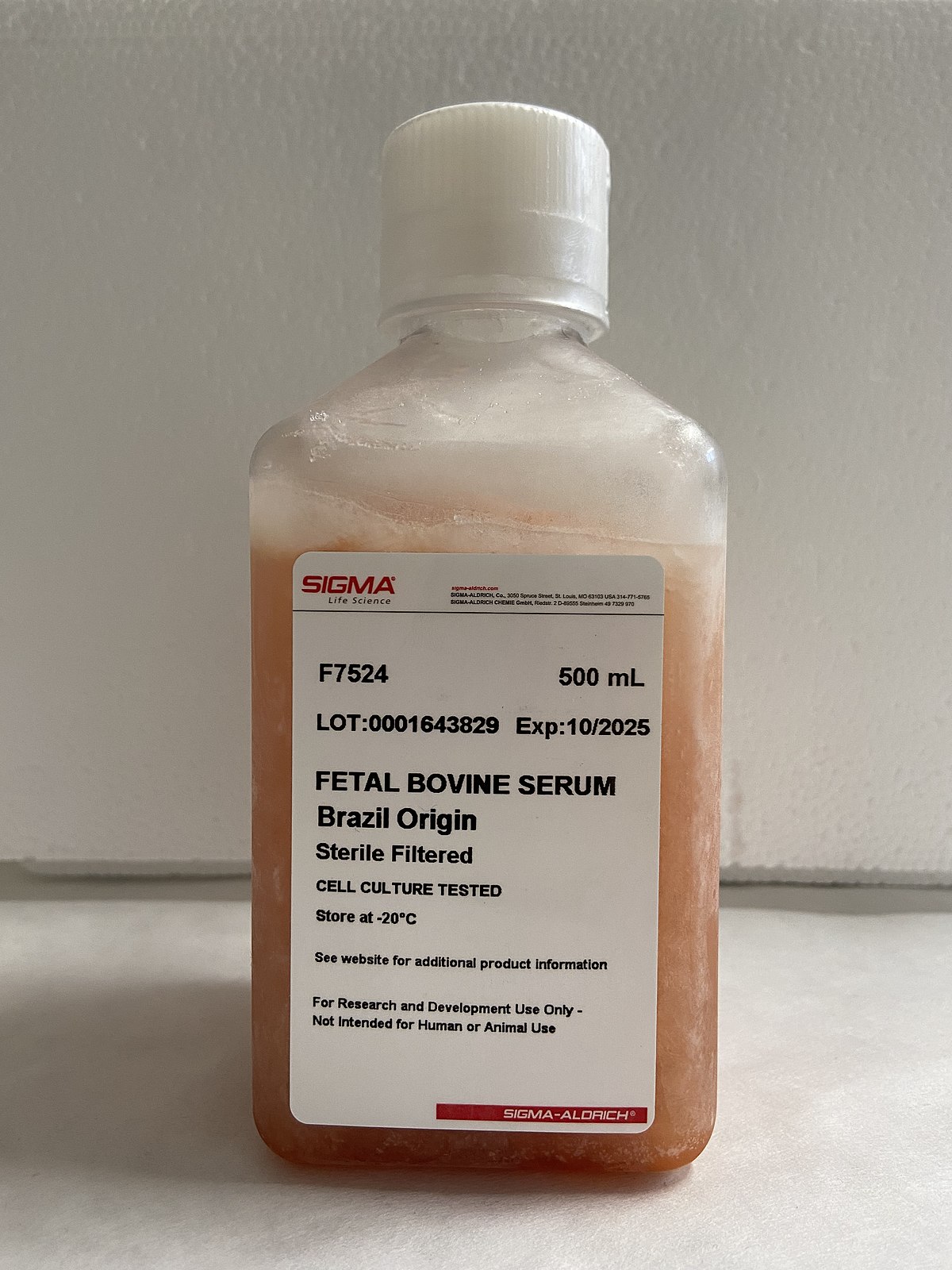Unfortunately, as pointed out earlier Grand island is looking like a mess with the infection, and testing lagging way behind there for a variety of reasons. But it is going to be a great site for antibody testing. Small enough population to do a survielence study on a significant percentage of population, but not so high it becomes completely undoable. Also, high enough infection rate too have huge numbers of infected and asymptomatic in same location.
-
You do not need to register if you are not going to pay the yearly fee to post. If you register please click here or log in go to "settings" then "my account" then "User Upgrades" and you can renew.
HuskerMax readers can save 50% on Omaha Steaks .
You are using an out of date browser. It may not display this or other websites correctly.
You should upgrade or use an alternative browser.
You should upgrade or use an alternative browser.
Questions for Native and Coronavirus discussion Thread
- Thread starter Native
- Start date
Dma
I think the “peaks” are still being detected, at least now, just at a much lower overall rate than reality.
If 1000 people get infected but you only test/see 100 positives, if it jumps to 2000 next week and you see 200 +, you are still seeing a representation of a spike. I could also argue that we have no freaking clue, since testing is still woefully inadequate right now.
Is it possible that since everyone is most likely understating the number of people with the disease, by what seems to be a very significant amount, that maybe the "peak" is being arrived at earlier than the projections are saying it would? Not trying to be naive here, but wouldn't that be a potential shift of the peak toward the front of the time line and possibly, repeat possibly, put us further along in the cycle of the disease than the models say we are?
I completely agree with you that the number of positives reported is a very small percentage of the true number of people who have had the disease, due to the high number of asymptomatic people.
I think the “peaks” are still being detected, at least now, just at a much lower overall rate than reality.
If 1000 people get infected but you only test/see 100 positives, if it jumps to 2000 next week and you see 200 +, you are still seeing a representation of a spike. I could also argue that we have no freaking clue, since testing is still woefully inadequate right now.
Unfortunately, as pointed out earlier Grand island is looking like a mess with the infection, and testing lagging way behind there for a variety of reasons. But it is going to be a great site for antibody testing. Small enough population to do a survielence study on a significant percentage of population, but not so high it becomes completely undoable. Also, high enough infection rate too have huge numbers of infected and asymptomatic in same location.
Good point. Should Ab test the entire town and surrounding areas that house the packing plant worker population.
Agree with your assesment above about the Ab tests...Wild West and too unreliable to draw too many hard conclusions, but those two studies really hit home what I have maintained...there is a much, much higher spread than is widely thought to have occurred, or has been reported.
CA is really having trouble getting swabs, sample transport media and RNA extraction kits for the diagnostic tests. Testing is up to nearly 100,000 per day, but that is nothing to where it needs to be according to CAs plan to relax shelter at home.
CA is really having trouble getting swabs, sample transport media and RNA extraction kits for the diagnostic tests. Testing is up to nearly 100,000 per day, but that is nothing to where it needs to be according to CAs plan to relax shelter at home.
You hit the three pillars there...and this is why we are NOT yet testing over 1M/week. Thank you for the reminder.
Extraction is a big bottleneck, specifically plastics. Has been the entire time. Getting much better this month as manufacturing capacity has jumped across the board at every major company, but it’s truly mind-boggling from an order volume standpoint.
However, even the testing labs that have now been able to get enough extraction and have capacity are limited by samples coming to them. Why?
Swabs and viral transport media.
Approximately five weeks ago, i was peripherally in a conversation about those very items with people at a respected academic hospital who were scrambling then for any alternatives or creative options to secure a supply chain.
I heard a few weeks back that nylon swabs were such a low margin item that were still only manufactured by a few companies. Most of those were in China. One of the prominent suppliers to the US was a company in Italy. Yeah...boom and boom.
Without viral transport media in a container/tube to put the swab in and ship...no amount of testing capacity matters.
Here’s how to make VTM at home. It’s mostly Fetal Bovine Serum with some salts and antibiotic/antifungal. The FBS is why it’s in short supply, I’d guess.
I don’t know much about VTM and who all sells/manufactures it, and I must confess I thought it was more complex.
I’m fairly shocked they don’t use something that both inactivates the virus as well as stabilizes the RNA in the sample so it does not degrade. This is essentially a growth media and you have to test in 48 hours. I’m assuming you have potentially live virus on the receiving end, which would make the biohazard shipping and sample intake more complex.
Companies out here are ramping up 3D printing of swabs, hope it helps.
,
That can only help.
Companies out here are ramping up 3D printing of swabs, hope it helps.
That can only help.
Right on cue, viral transport media screws up the 5 min Abbott test...

 www.cnn.com
www.cnn.com
Lots of good stuff in the article. I don’t know how the chemistry for RNA detection works in this system, but I could make a big fat guess that it’s something prevalent in the FBS like albumin.
Fetal Bovine Serum

 en.m.wikipedia.org
en.m.wikipedia.org

Abbott's rapid tests can produce false negatives under certain conditions, the company says | CNN
The maker of a rapid coronavirus test widely used across the United States and distributed by the federal government has warned that its device can produce false negatives if a special solution is used to move or store patients' samples.
Lots of good stuff in the article. I don’t know how the chemistry for RNA detection works in this system, but I could make a big fat guess that it’s something prevalent in the FBS like albumin.
Abbott Laboratories instructed health care providers last week not to use solutions known as "viral transport media" for samples tested on its ID NOW device, which runs one test at a time and can detect positive coronavirus cases in as little as five minutes and spit out negative results in 13 minutes.
The company says customers should instead only place swabs with patient samples directly in the device. When that method is used, the test performs as "expected," an Abbott spokesperson said, adding that when the company learned about the issue it immediately notified its customers and the US Food and Drug Administration.
Fetal Bovine Serum

Fetal bovine serum - Wikipedia
Lots of talk about antibodies present in the general population... I don't have a specific link, but seems like people are assuming that antibodies mean resistance to COVID-19. Is this true? Is there a test for specific resistant antibodies, or are all antibodies for all coronaviruses being lumped together, or is it even wider than just coronoviruses?
Lots of talk about antibodies present in the general population... I don't have a specific link, but seems like people are assuming that antibodies mean resistance to COVID-19. Is this true? Is there a test for specific resistant antibodies, or are all antibodies for all coronaviruses being lumped together, or is it even wider than just coronoviruses?
As FLAS and I have been saying, antibody testing is currently in the wild west stage. Lot of sensitivity and specificity issues. Antibodies recognize a 7-10 amino acid stretch where protein conformation is important. So scientists have to be able to provide a protein, (likely the S-Protein) in a context that is similar to how it might be seen in our bodies. Then you take serum and see if it binds, then you do a second step to determine if IgG or IgM that binding. Any binding to the S-protein doesn't mean you have antibodies that will prevent reinfection. Then you are talking specific protein areas that are largely undetermined at this point. The major modification that took place with Cov2 vs, SARS and MERS is that the human protein that it interacts with is ACEII. So in theory our bodies making antibodies to that region of the S-protein would be neutralizing, or meaning provide protection. If the virus is blocked from entering cells then it can't cause infection.
So if you use whole virus particles or other virus parts which your body is likely making antibodies too as well and may be effective at stopping the virus, you run the risk that those proteins are highly similar to the proteins found in other coronaviruses. Therefore, if you are antibody positive to those regions a gob of testing is required to know if this is a specific SARS-CoV2 developed antibody or if you made an antibody to the common cold variety of coronavirus.
Make sense somewhat?
Yes, I understand: you are saying depends, need to know the specifics of the test and the magic serum test may not be in use.As FLAS and I have been saying, antibody testing is currently in the wild west stage. Lot of sensitivity and specificity issues. Antibodies recognize a 7-10 amino acid stretch where protein conformation is important. So scientists have to be able to provide a protein, (likely the S-Protein) in a context that is similar to how it might be seen in our bodies. Then you take serum and see if it binds, then you do a second step to determine if IgG or IgM that binding. Any binding to the S-protein doesn't mean you have antibodies that will prevent reinfection. Then you are talking specific protein areas that are largely undetermined at this point. The major modification that took place with Cov2 vs, SARS and MERS is that the human protein that it interacts with is ACEII. So in theory our bodies making antibodies to that region of the S-protein would be neutralizing, or meaning provide protection. If the virus is blocked from entering cells then it can't cause infection.
So if you use whole virus particles or other virus parts which your body is likely making antibodies too as well and may be effective at stopping the virus, you run the risk that those proteins are highly similar to the proteins found in other coronaviruses. Therefore, if you are antibody positive to those regions a gob of testing is required to know if this is a specific SARS-CoV2 developed antibody or if you made an antibody to the common cold variety of coronavirus.
Make sense somewhat?
In Colorado, the assumption is that 1% of the populace has contracted the virus now - that number could be 2x, 5x, 10x too low. As I understand it, that's too low an infection rate for the serum tests to be effective because the false positive rate is higher than the infection rate. This has been the case with some of the virus tests as well, but I understand they are better now. SO... if the error rate is +-10% on an expected rate of 1-10%, is much point of general testing?
Yes, I understand: you are saying depends, need to know the specifics of the test and the magic serum test may not be in use.
In Colorado, the assumption is that 1% of the populace has contracted the virus now - that number could be 2x, 5x, 10x too low. As I understand it, that's too low an infection rate for the serum tests to be effective because the false positive rate is higher than the infection rate. This has been the case with some of the virus tests as well, but I understand they are better now. SO... if the error rate is +-10% on an expected rate of 1-10%, is much point of general testing?
The test that everyone getting that is RNA based is extremely sensitive and specific. Technically is tons easier to design and validate. Given samples to test as controls, I could design and have an RNA test that is just as good as being used in the manner of a week. The antibody test, the development and controls are way harder. Even if I had a perfect set of serums to test, Colds, SARS, MERS, SARS-CoV2, from infected, uninfected, dual infected etc making that test would take months even with a team of scientists.
Thanks for that explanation. That's just something that I am not going to read, it's too specific.The test that everyone getting that is RNA based is extremely sensitive and specific. Technically is tons easier to design and validate. Given samples to test as controls, I could design and have an RNA test that is just as good as being used in the manner of a week. The antibody test, the development and controls are way harder. Even if I had a perfect set of serums to test, Colds, SARS, MERS, SARS-CoV2, from infected, uninfected, dual infected etc making that test would take months even with a team of scientists.
Thanks, @Native, I read it. You'd be pleased to know how many times I've shared what you guys have written here with others around me.The test that everyone getting that is RNA based is extremely sensitive and specific. Technically is tons easier to design and validate. Given samples to test as controls, I could design and have an RNA test that is just as good as being used in the manner of a week. The antibody test, the development and controls are way harder. Even if I had a perfect set of serums to test, Colds, SARS, MERS, SARS-CoV2, from infected, uninfected, dual infected etc making that test would take months even with a team of scientists.
Thanks for that explanation. That's just something that I am not going to read, it's too specific.
Check out the last post in my other thread if you really want more to read. Really good review on serotesting pros, cons, pitfalls etc. LINK


